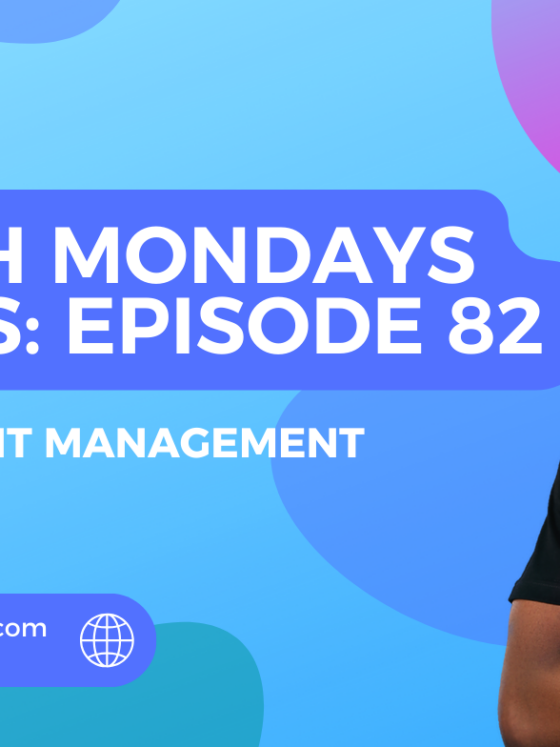Integrating Low-Code Automation into Business Development for Smarter Growth
North Mondays Series: Episode 121

Why Low-Code Automation Is Changing Business Development in 2025
Here’s what the typical process for business development looked like before now:
Long calls + endless meetings + handwritten notes about “next steps” that lived in spiral-bound notebooks.
The best salespeople thrived on one-to-one connections, and the magic was in the human touch. But in today’s world a single business development rep might be managing 200+ leads at once.
This person is expected to remember every client’s pain point, follow up at the perfect time, and respond instantly when they click an email link or visit your pricing page at midnight.
It’s safe to say that the manual approach is no longer effective.
The manual process slows growth, while over-automation risks stripping away the personal touch.
So what do we do?
We create balance in the name of low-code automation which steps in to automate repetitive tasks while keeping critical human interactions intact. It’s not about replacing people; it’s about giving them the tools to operate faster and smarter.
Balancing Low-Code Automation with Personalization
You’ve heard it countless times but I’ll repeat it once again for the people at the back: Your prospect isn’t buying a product, they’re buying into a relationship.
In business development, trust is currency and as with actual money, people are skeptical.
If your outreach feels mass-produced, you’ll lose credibility before the conversation even starts.
When automation takes over entirely, you risk turning conversations into impersonal transactions.
Low-code automation works best when it:
- Send personalized outreach at scale without copying and pasting the same template 200 times.
- Trigger reminders for timely follow-ups based on lead behavior
- Automate data entry and CRM updates to free up sales reps for actual conversations
- Track performance in real time so teams can adjust tactics quickly
The challenge is finding the right mix; enough automation to speed up workflows without losing the connection that converts leads into loyal customers.
A simple rule: If a touchpoint influences trust, keep it human.
Low-Code Automation as a Strategic Growth Driver
Low-code automation has shifted from a tech convenience to a competitive growth strategy.
Forward-thinking companies aren’t waiting for IT to build every solution, they’re empowering their sales and marketing teams to build their own.
They use it to:
- Prototype and deploy new workflows in weeks, not months.
- Integrate CRM, analytics, and marketing tools into one seamless pipeline.
- Automate qualification so reps spend their time on the most promising leads.
- Shorten the sales cycle without sacrificing personalization.
According to recent reports, companies adopting low-code tools see a 30–50% reduction in process turnaround times. This means faster responses, quicker deal closures, and more opportunities in the pipeline.
How to Implement Low-Code Automation Without Losing the Human Element
1. Start with the Customer Experience in Mind
Map out your sales journey from the customer’s perspective. Identify which interactions should remain personal and which can be automated.
2. Involve Your Frontline Teams in Design
our sales reps and partnership leads know exactly where the bottlenecks are. Let them help design workflows because if they own it, they’ll use it.
3. Start Small, Then Expand
Don’t automate your entire process at once. Begin with one or two high-impact tasks—like scheduling demos or sending follow-up emails—then measure the results before scaling.
4. Keep Data Centralized and Clean
Automation is only as good as your data. Sync your CRM, email tools, and analytics. Poor data can ruin even the smartest workflow.
5. Personalize Where It Matters Most
Automate the admin work but personalize the pitch, the follow-up, and the “we’d love to work with you” conversation.
Common Pitfalls to Avoid
- Over-Automation – Leads can sense when communication is too templated.
- Siloed Systems – Workflows lose value if they don’t connect with your existing tools.
- Lack of Monitoring – Automation is not “set and forget.” You need to review performance regularly.
- Skipping Team Training – Tools only work if your team knows how to use them.
North Mondays Action Plan
- Audit Your Current Processes: Identify where manual tasks slow your sales cycle.
- Define Automation Boundaries: Protect relationship-driven touchpoints.
- Choose the Right Platform: Look for tools that integrate easily with your CRM, email, and analytics stack.
- Pilot, Measure, Improve: Run small-scale tests, then expand based on results.
- Keep the Feedback Loop Open: Ask your sales team and clients how the process feels.
Why Low-Code Automation Is Here to Stay
Low-code automation is not a passing trend, it’s a long-term shift in how businesses operate.
It reduces dependence on overburdened IT teams, shortens time-to-market for process improvements, and enables real-time adaptability in competitive industries.
Most importantly, it allows business development teams to spend less time managing admin work and more time building the relationships that drive revenue.
North Mondays is your weekly series on strategies, trends, and tools shaping the future of African and global business growth.








Recent Comments